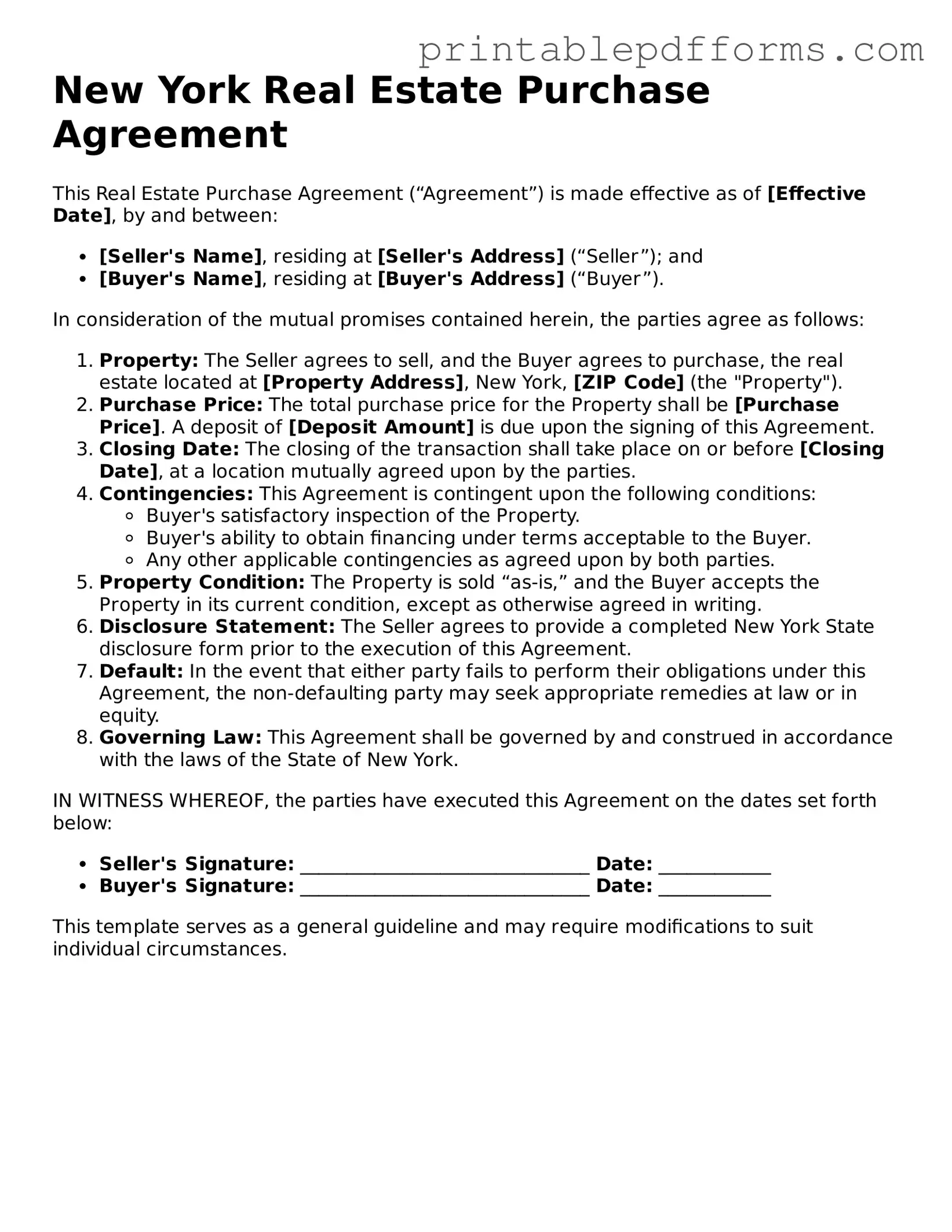What is a New York Real Estate Purchase Agreement?
A New York Real Estate Purchase Agreement is a legally binding document that outlines the terms and conditions under which a buyer agrees to purchase property from a seller. This agreement includes essential details such as the purchase price, property description, and closing date, ensuring both parties understand their obligations.
Who typically prepares the Purchase Agreement?
While either party can draft the Purchase Agreement, it is common for the seller or their real estate agent to prepare it. Buyers are encouraged to have their attorney review the document before signing to ensure their interests are protected.
What key elements should be included in the Purchase Agreement?
Essential elements of a New York Real Estate Purchase Agreement include:
-
Property Description:
A detailed description of the property being sold.
-
Purchase Price:
The agreed-upon price for the property.
-
Deposit Amount:
The initial deposit made by the buyer, often referred to as "earnest money."
-
Contingencies:
Conditions that must be met for the sale to proceed, such as financing or inspection contingencies.
-
Closing Date:
The date when the transaction will be finalized.
What are contingencies, and why are they important?
Contingencies are conditions included in the Purchase Agreement that must be satisfied for the sale to go through. They are crucial because they protect buyers from unforeseen issues. Common contingencies include:
-
Financing contingency, which allows buyers to back out if they cannot secure a mortgage.
-
Inspection contingency, giving buyers the right to inspect the property and negotiate repairs.
Can the Purchase Agreement be modified after it is signed?
Yes, the Purchase Agreement can be modified after it is signed, but both parties must agree to any changes. Modifications should be documented in writing and signed by both the buyer and the seller to ensure clarity and enforceability.
What happens if the buyer backs out of the agreement?
If a buyer backs out of the Purchase Agreement without a valid contingency, they may forfeit their deposit. However, if the buyer withdraws due to a valid contingency, they can typically recover their deposit without penalty.
Is a real estate attorney necessary for a Purchase Agreement?
While it is not legally required to have an attorney for a real estate transaction in New York, it is highly recommended. An attorney can provide valuable guidance, ensure compliance with state laws, and help protect your interests throughout the process.
What is the role of the real estate agent in this process?
A real estate agent acts as an intermediary between the buyer and seller. They assist in drafting the Purchase Agreement, provide market insights, and facilitate communication. Their expertise can be invaluable in negotiating terms and navigating the complexities of the transaction.
What should buyers do after signing the Purchase Agreement?
After signing the Purchase Agreement, buyers should take several steps, including:
-
Paying the deposit to secure the property.
-
Scheduling a home inspection.
-
Securing financing if not already done.
-
Reviewing the title report once it is available.
Staying organized and proactive during this period can help ensure a smooth closing process.
When does the Purchase Agreement become legally binding?
The Purchase Agreement becomes legally binding once both the buyer and seller have signed the document and the buyer has provided the required deposit. At this point, both parties are obligated to fulfill the terms outlined in the agreement.
